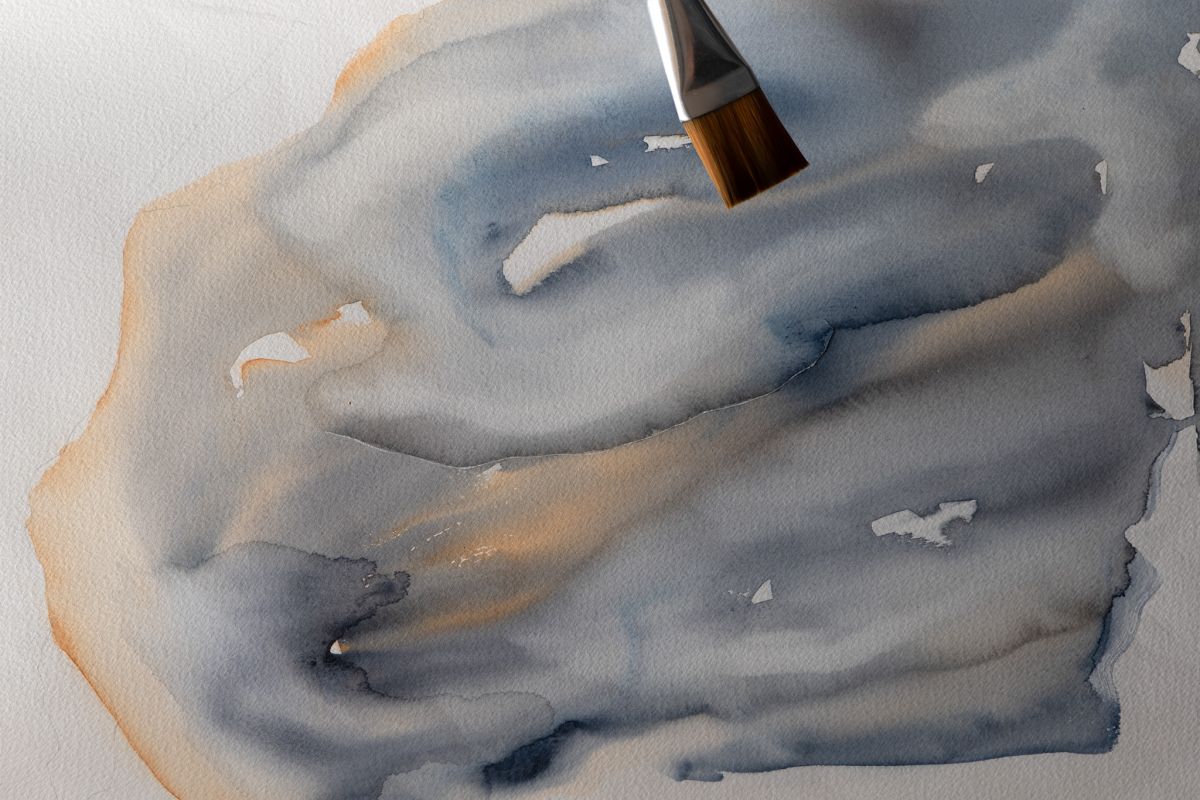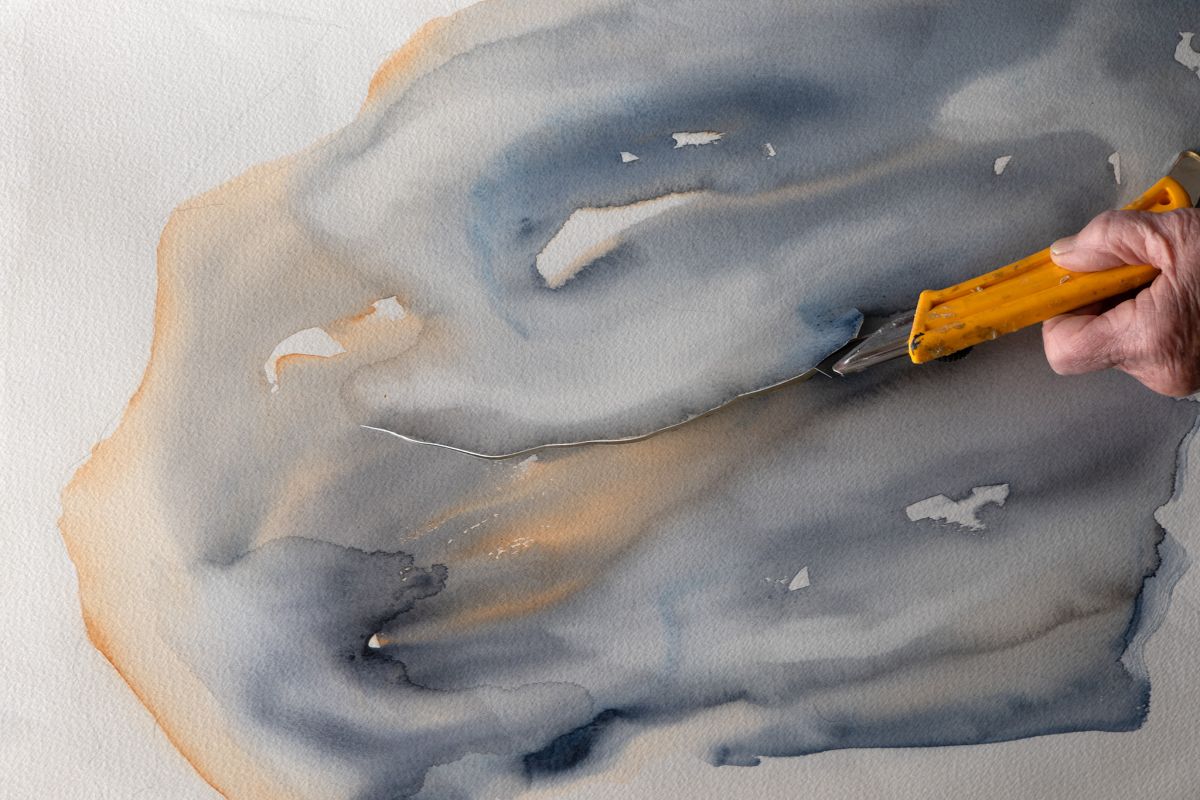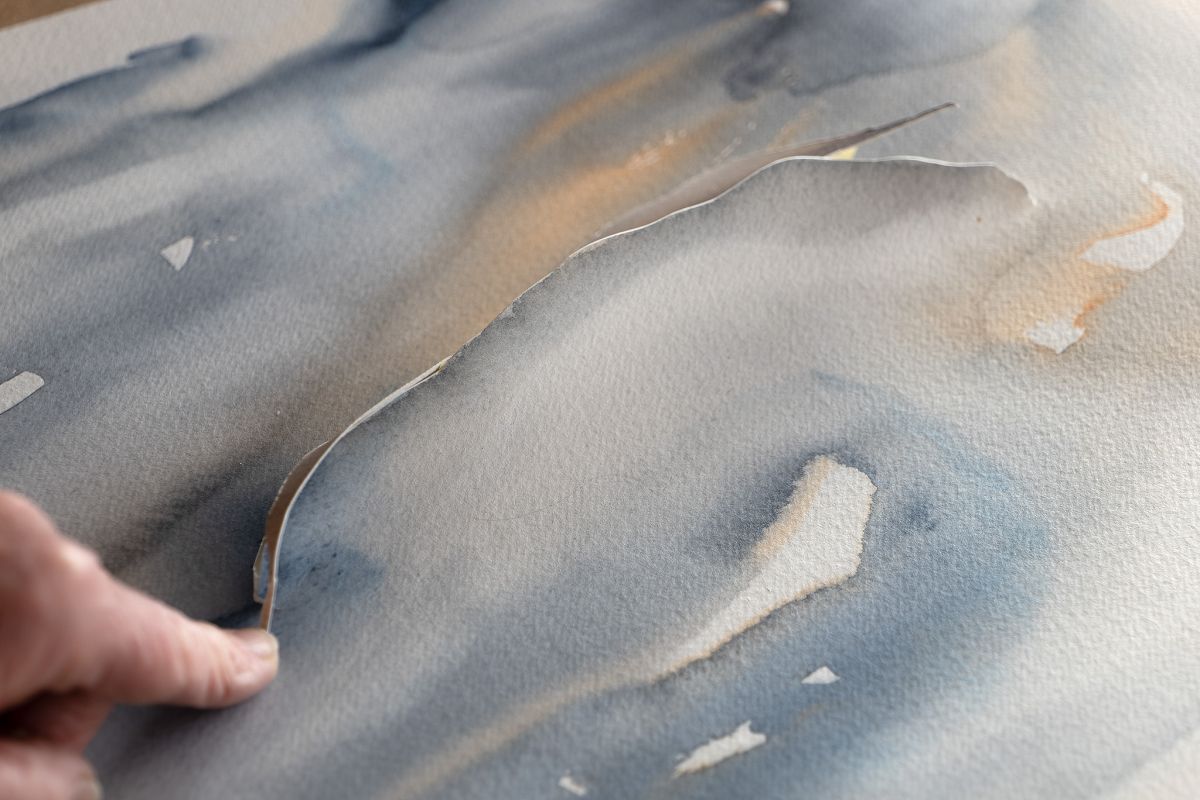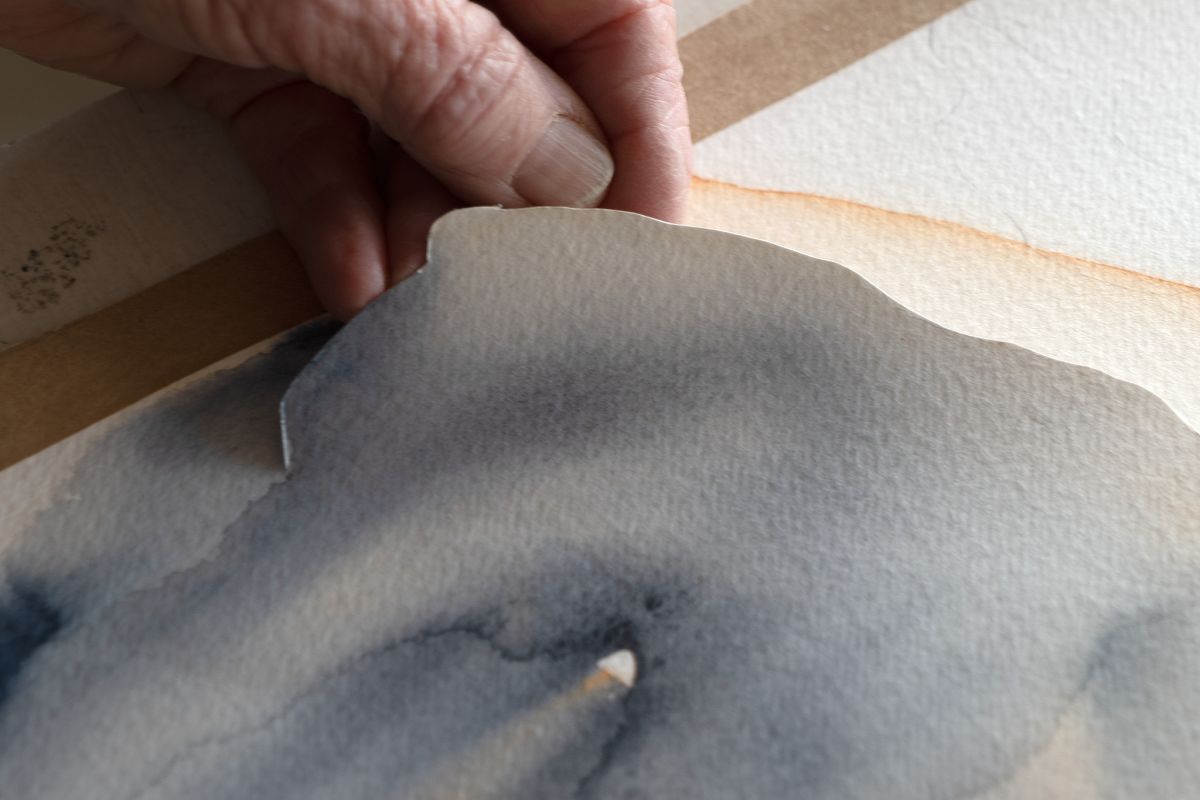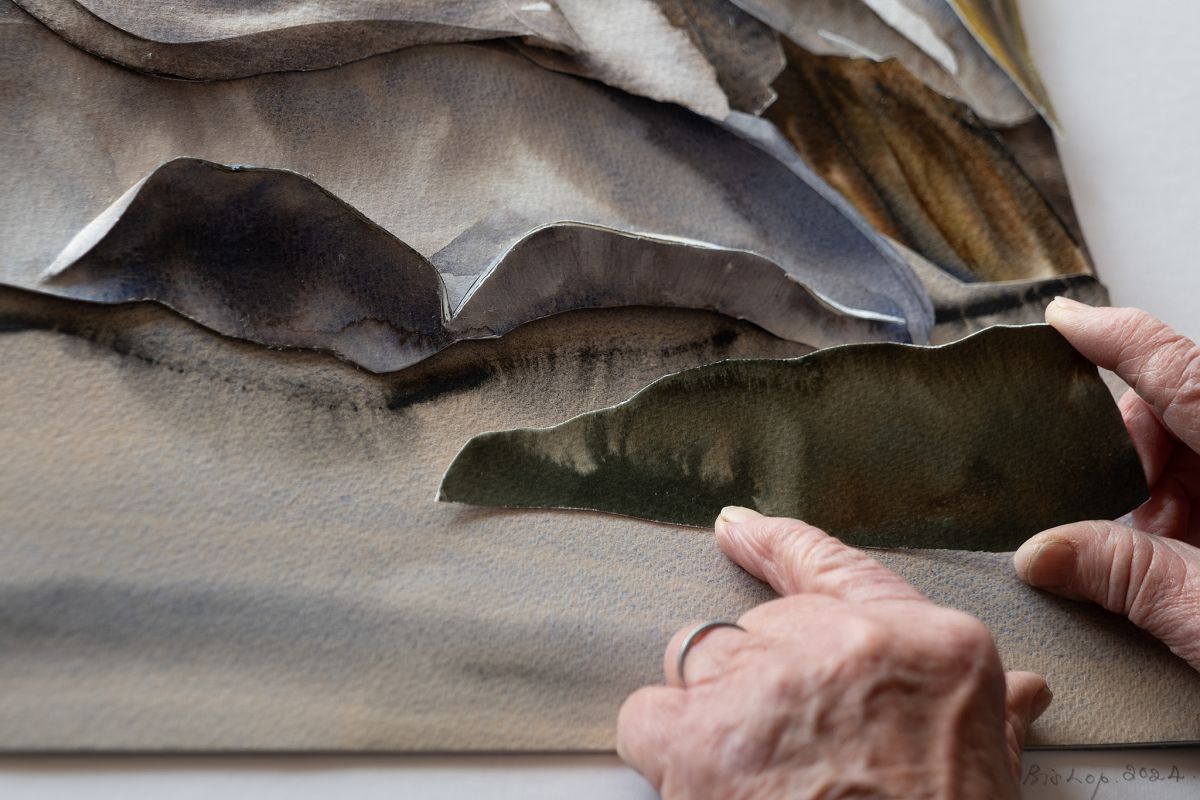The Creative Process: From Inspiration to Artwork
How a Sculptural Watercolour Comes to Life
“It takes ten watercolour paintings of a mountain to make just one sculptural watercolour.”
— Prue Bishop
Unlike traditional watercolourists, Prue’s creative process goes beyond painting on a flat sheet. She builds layered, dimensional landscapes, carefully crafting depth and perspective into each piece.
Every sculptural watercolour undergoes an intensive transformation—from initial studies to the final, three-dimensional form.
1️⃣ The Journey Begins: 10 Paintings for Every One Final Masterpiece
Before any sculptural work begins, Prue first creates at least ten different watercolour studies. This allows her to test perspective, composition, and colours before committing to a final structure.
Why so many?
✔ Capturing the perfect perspective takes multiple attempts
✔ Light and colour need to be harmonized across the landscape
✔ Depth must be carefully planned before layering begins
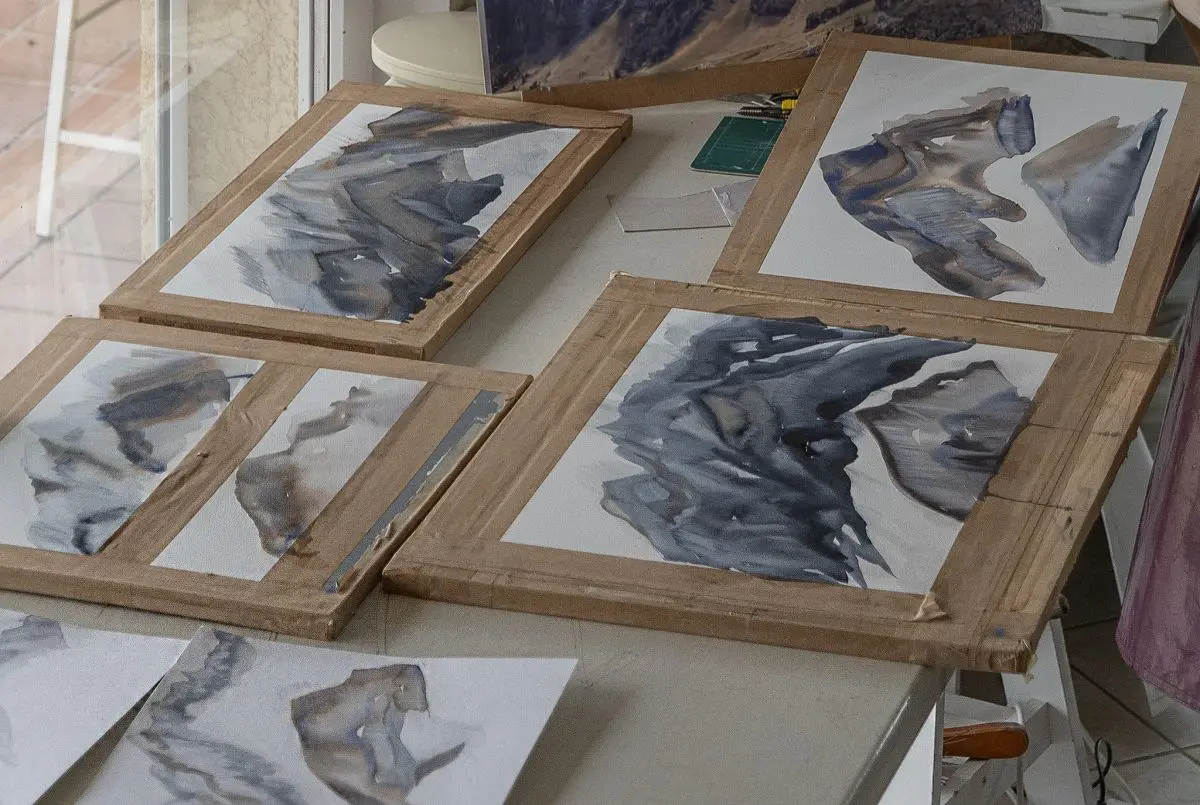
2️⃣ The Challenge of Perspective & Depth
Sculptural watercolours are not just paintings—they extend outward, creating real, physical depth. This means that perspective calculations must be precise to ensure the artwork feels natural from all angles.
Example: The Chillon Castle Perspective Puzzle
To create the illusion of looking down at the castle while also seeing into the distance, Prue’s vanishing points had to extend far beyond her studio table. She used two long straightedges that stretched past the edges of the room to get the correct alignment.
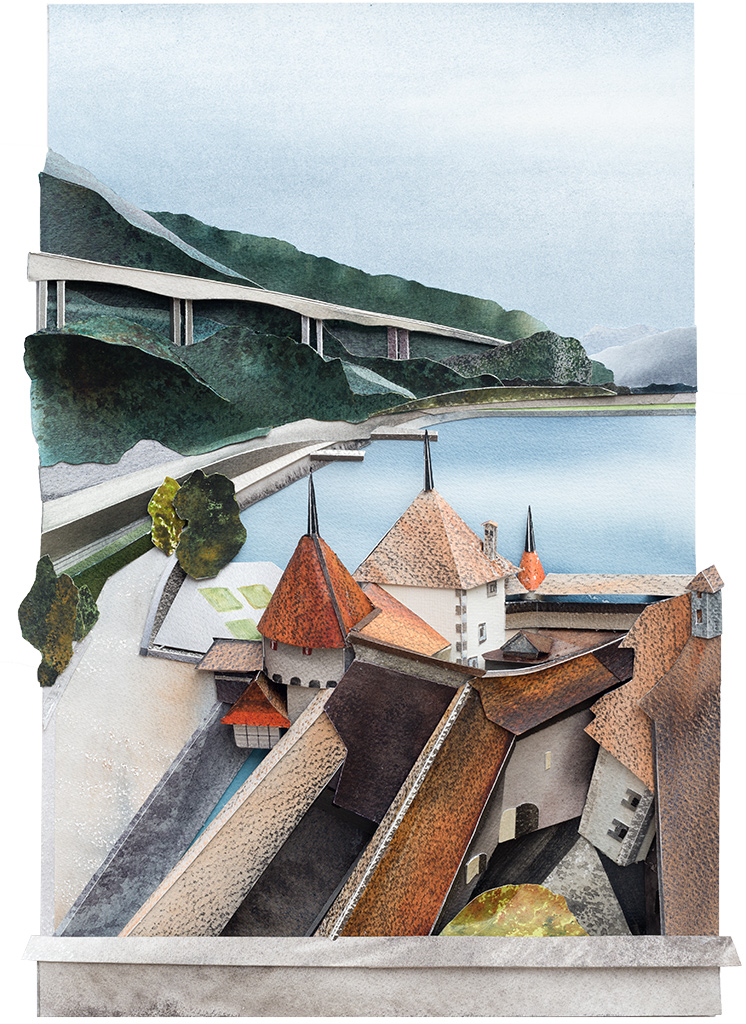
"I had to extend my vanishing points beyond my workspace—miles off—just to get the perspective right."
3️⃣ From 2D to 3D: Assembling the Sculptural Layers
Once the final watercolour painting is chosen, the physical construction begins.
The Key Steps:
✔ Cutting along natural lines (mountain ridges, rock edges, water flow)
✔ Raising sections to create depth
✔ Using precision-cut supports to maintain structure
Example: Creating the Flow of a Glacier
In The Trillion-Ton Glacier, Prue needed the painting to physically curve—mimicking how ice shifts over time. She sawed the painting in half, then rebuilt it into a flowing form before backing it with supports.
4️⃣ The Importance of Protecting the Artwork
Since sculptural watercolours involve physical layering, the materials must be carefully treated to last over time.
Gum Arabic: The Essential Binder
✔ A natural resin that binds pigments to the paper
✔ Prevents colour from lifting or flaking
✔ Used by artists for centuries as the foundation of watercolour durability
"Without Gum Arabic, watercolour paint would just brush off the paper. It’s what makes the artwork last a lifetime."
🔗 See the Next Step—The Materials used
5️⃣ Finalizing the Painting Before Framing
After the layers are built, the final details are refined:
✔ Edges are smoothed & shaped for seamless integration
✔ Shadows and highlights are adjusted for added depth
✔ Final touch-ups ensure perfect visual balance
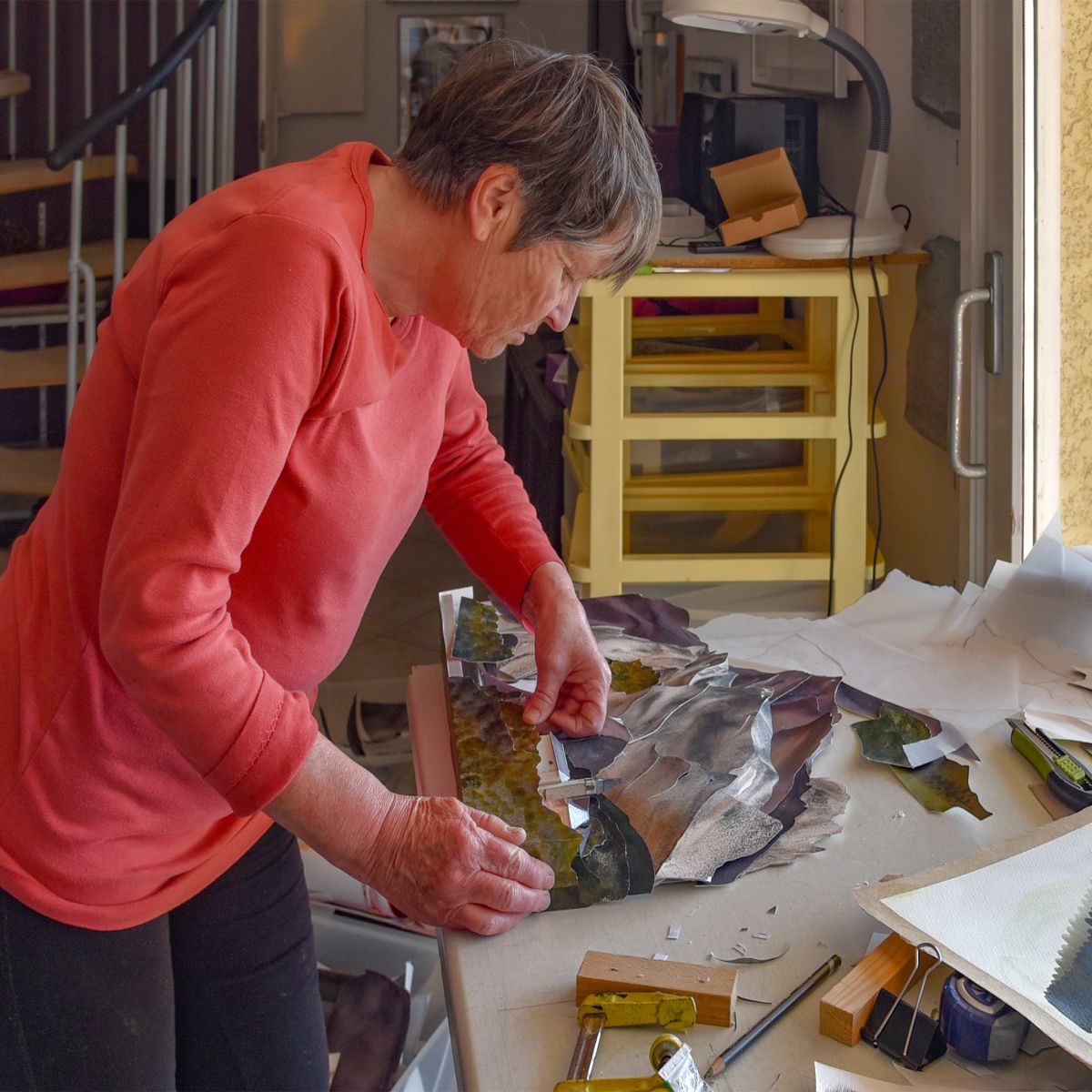
🔗 See How It’s Fully Assembled
Conclusion
Each sculptural watercolour is a journey from flat to dimensional, from an idea to a living artwork. It takes time, precision, and a deep understanding of how landscapes work.
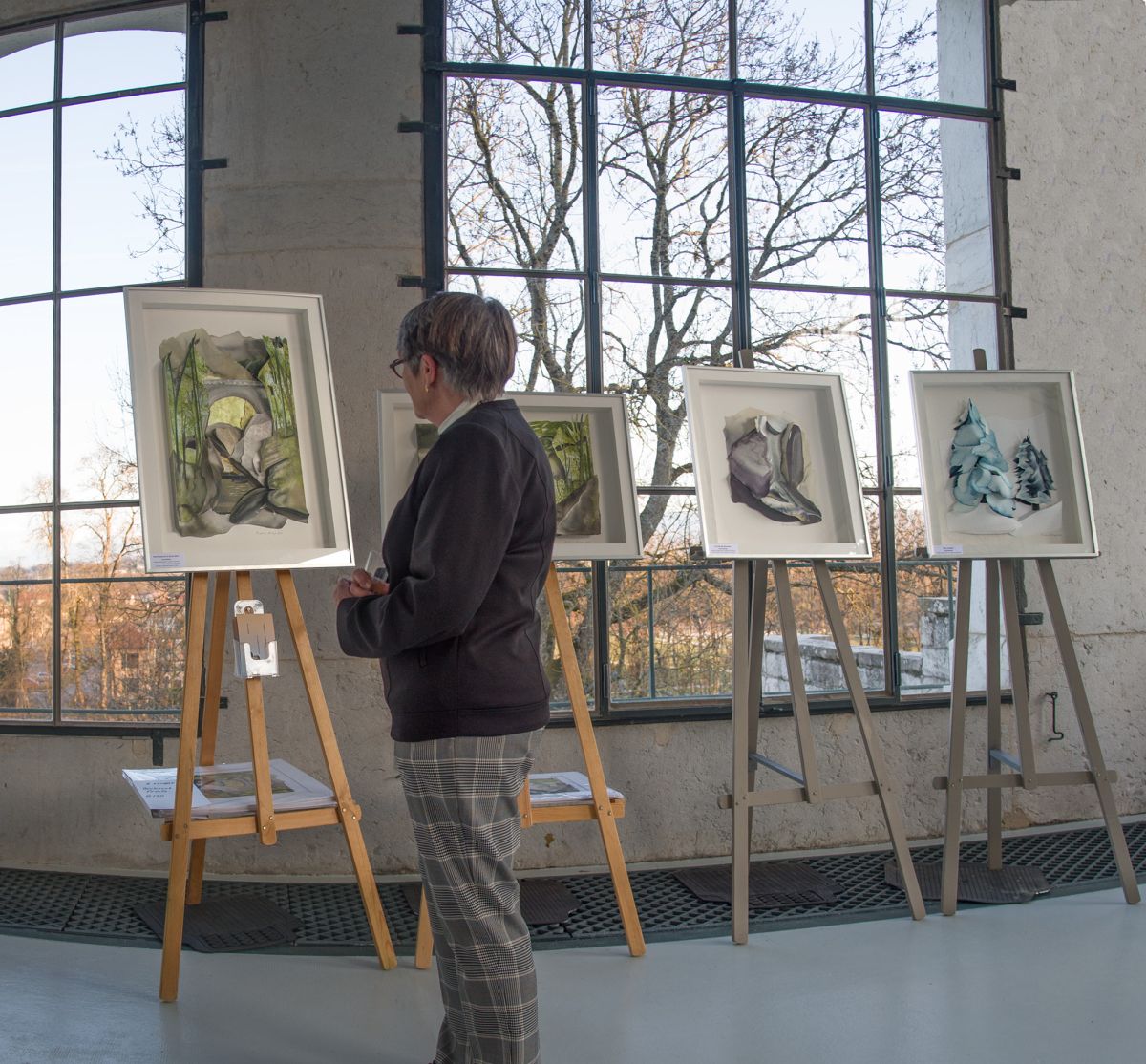
✅ Explore the Materials Behind the Art
✅ See the Full Collection of Switzerland, France, and Global Warming Finished Works
